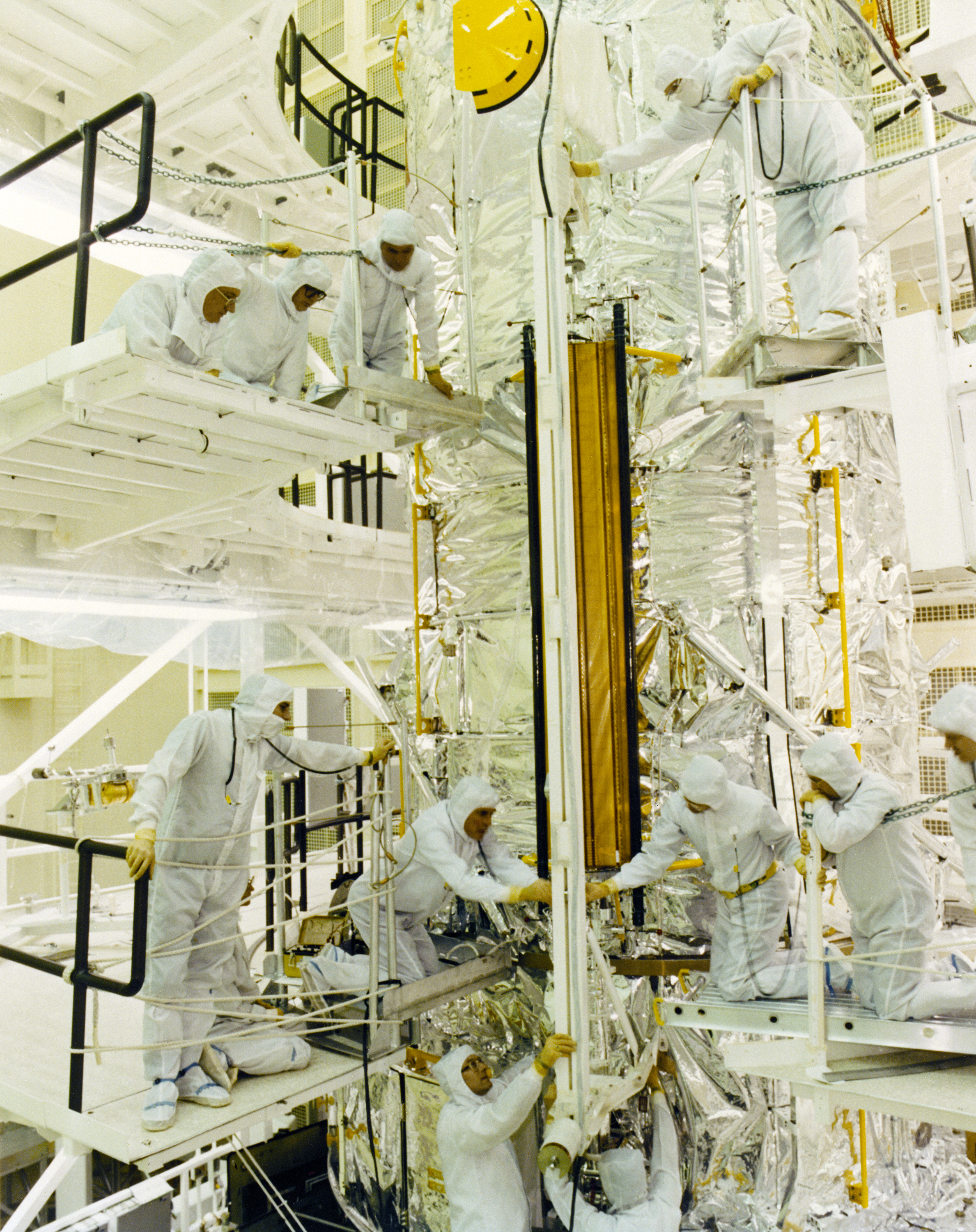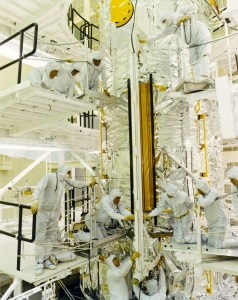
Hubble Space Telescope Solar Array Fit Check
Engineers and technicians conduct a fit check of the Hubble Space Telescope (HST) solar array flight article in a clean room of the Lockheed Missile and Space Company. The solar array is 40 feet (12.1 meters) long and 8.2 feet (2.5 meters) wide, and provides power to the spacecraft. Hubble was the first of NASA's great observatories and the most complex and sensitive optical telescope ever made. The purpose of Hubble is to study the cosmos from a low Earth orbit by placing the telescope in space, enabling astronomers to collect data that is free of Earth's atmosphere. Hubble was deployed from the Space Shuttle Discovery (STS-31 mission) into Earth orbit in April 1990. The Marshall Space Flight Center had overall responsibility for design, development, and construction of the observatory. The Perkin-Elmer Corporation in Danbury, Connecticut, developed the optical system and guidance sensors. The Lockheed Missile and Space Company, Sunnyvale, California, produced the protective outer shroud and spacecraft systems, and assembled and tested the finished telescope. Date Created: 1986-01-01
- X





























